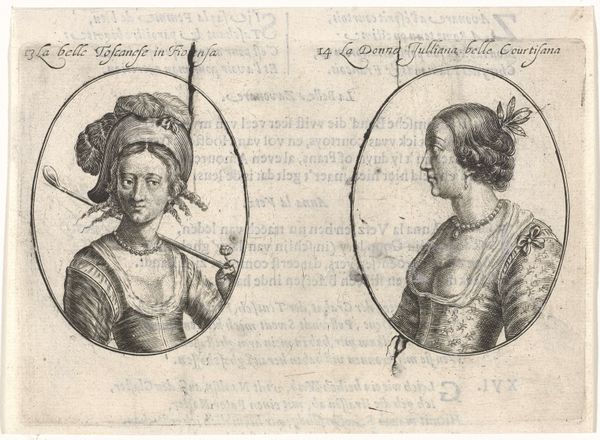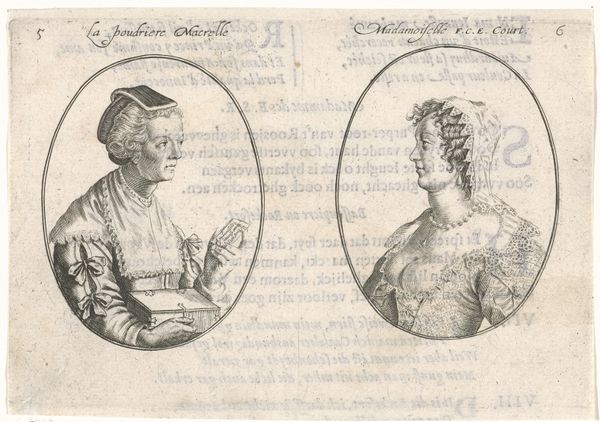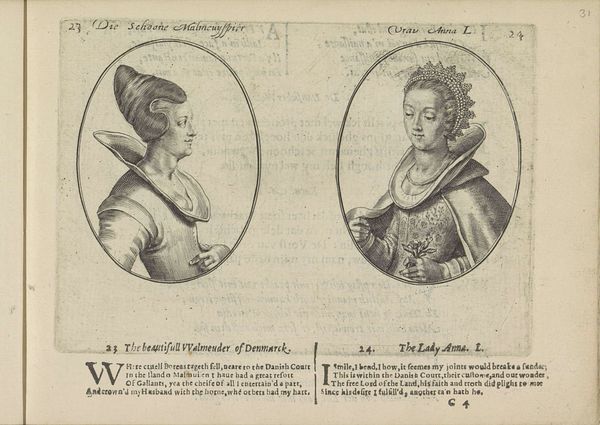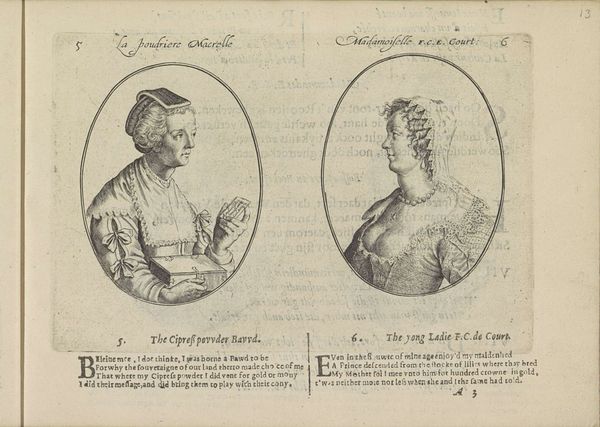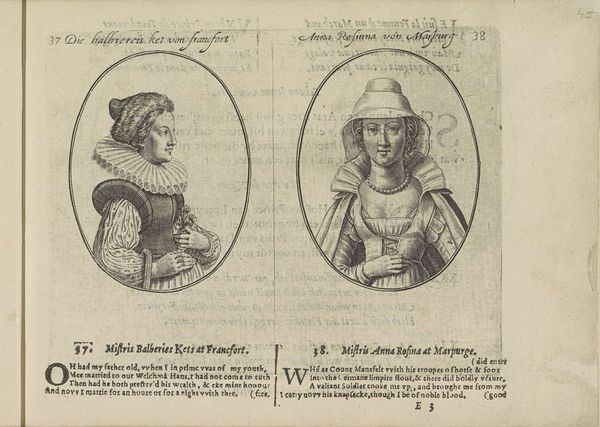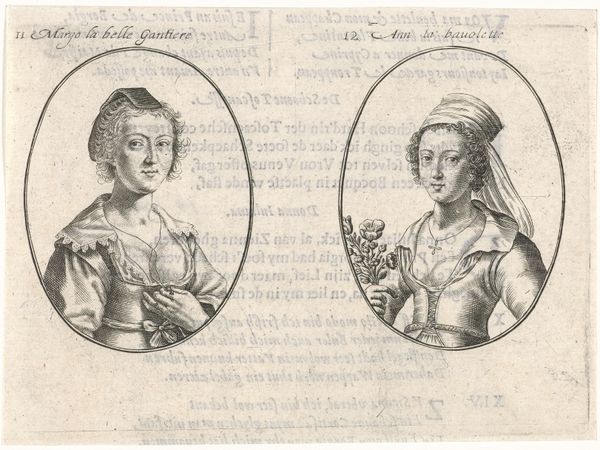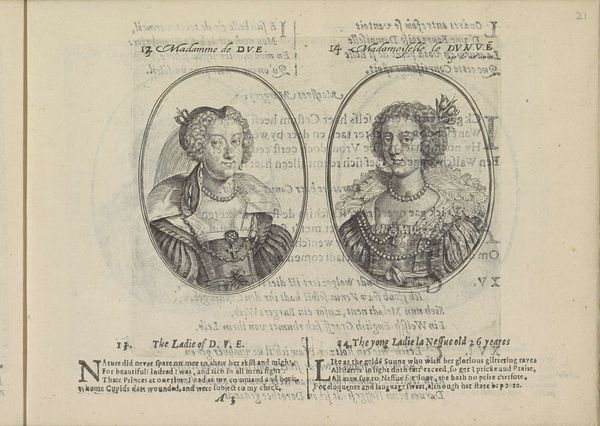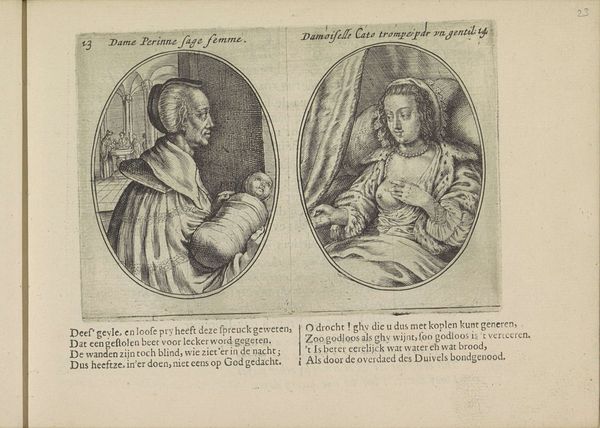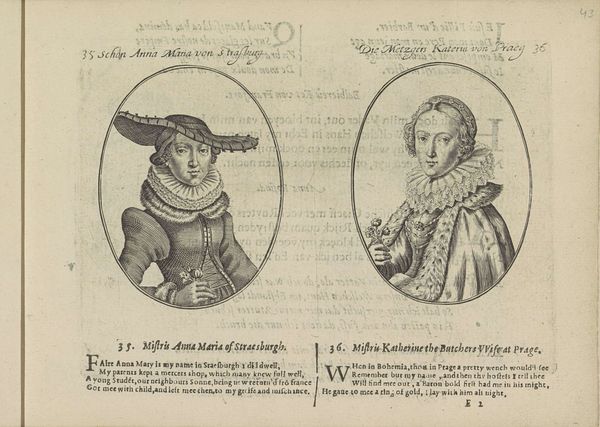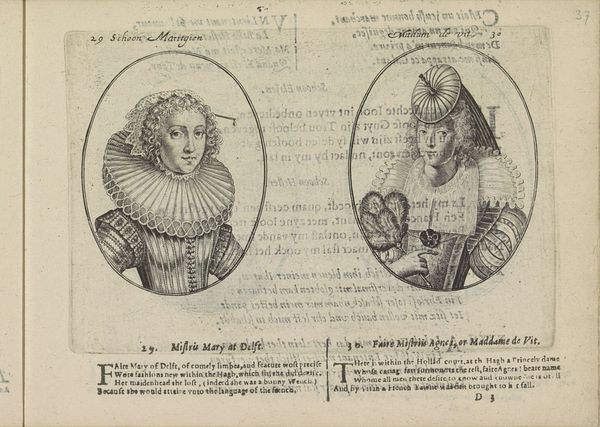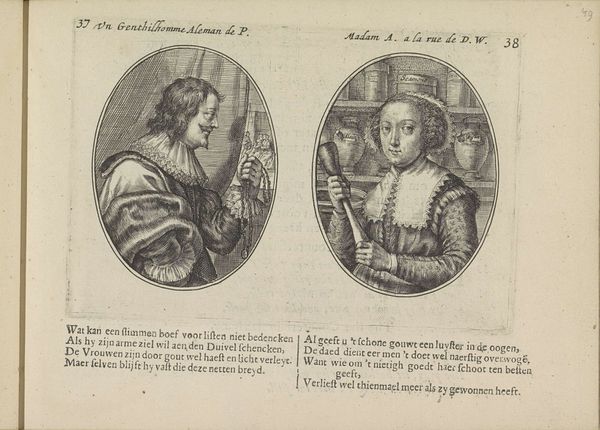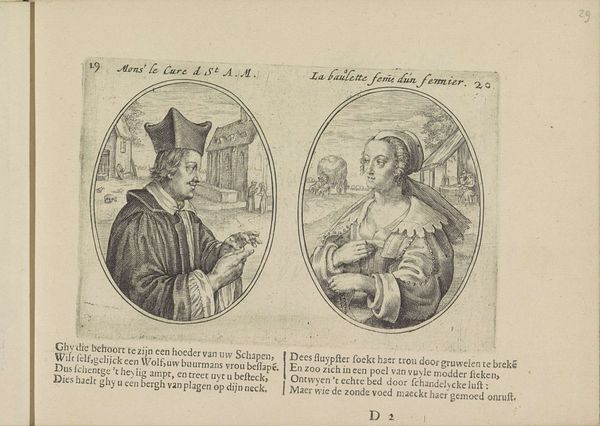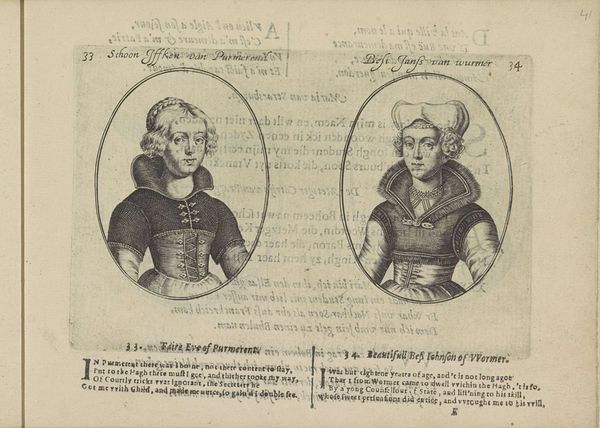
Portretten van de courtisanes genaamd de Schone Toscaanse en La Donna Juliana 1635
0:00
0:00
print, engraving
#
portrait
#
baroque
# print
#
old engraving style
#
history-painting
#
engraving
Dimensions: height 105 mm, width 159 mm
Copyright: Rijks Museum: Open Domain
Curator: Here we have a 1635 engraving by Crispijn van de Passe the Younger, titled "Portraits of the Courtesans known as the Beautiful Tuscan and La Donna Juliana." Editor: It strikes me immediately as a work of precise, almost delicate craft. The fine lines create a stark contrast, lending a kind of austere beauty despite the, shall we say, ample subject matter. Curator: Absolutely. The choice of engraving, a readily reproducible medium, is key. This print participates in a broader culture of portraiture and the circulation of images during the Baroque period, where representations of individuals became increasingly democratized and, therefore, commodified. Consider the means by which even courtesans could become iconic through reproducible images. Editor: I'm drawn to the symbolism implicit in depicting these women. The Tuscan courtesan holds a shepherd's crook, alluding to a poem underneath about Venus and forsaking the pastoral life for more…strategic pursuits. And La Donna Juliana is presented in profile, almost regal, with the text framing her relationship to nobility, Borgia. The arrangement positions them as desirable objects of the aristocratic gaze, potent symbols of worldly pleasure and intrigue. Curator: Right, but also commodities in a transactional system. Consider the labor involved—the artist's skill in rendering their likenesses, the printers who produced multiples, the networks of distribution that carried these images across Europe. The material existence of the print is inseparable from its subject: the women themselves who were part of elaborate and competitive economic systems. The surface delicacy belies a far more robust commercial network. Editor: I see what you mean. It’s about how imagery intersects with material reality and societal norms, projecting fame for profit but on certain limited and surveilled terms for the women involved. Ultimately, the circulation of these images reinforces existing social hierarchies even as it momentarily elevates the subjects. Curator: Indeed. Seeing these portraits allows us to consider the economic underpinnings of beauty and representation in 17th-century Europe. Editor: And for me, the piece resonates because of its complex intertwining of love, status, and reputation through image and text, giving visibility and historical insight into otherwise largely unknown women.
Comments
No comments
Be the first to comment and join the conversation on the ultimate creative platform.
